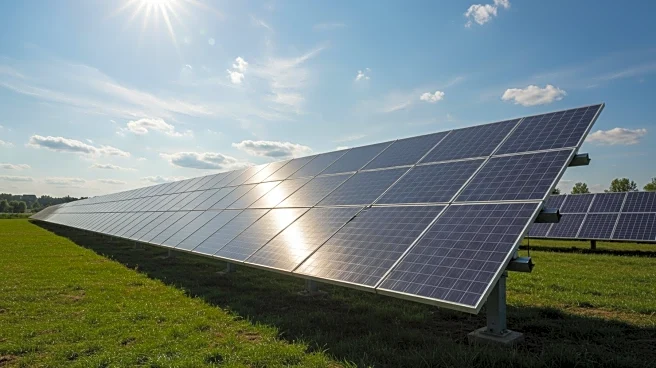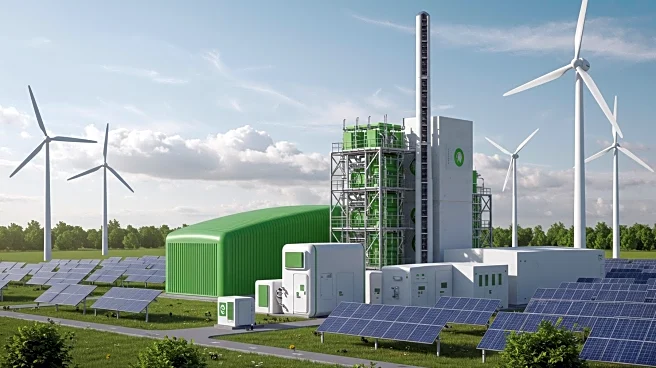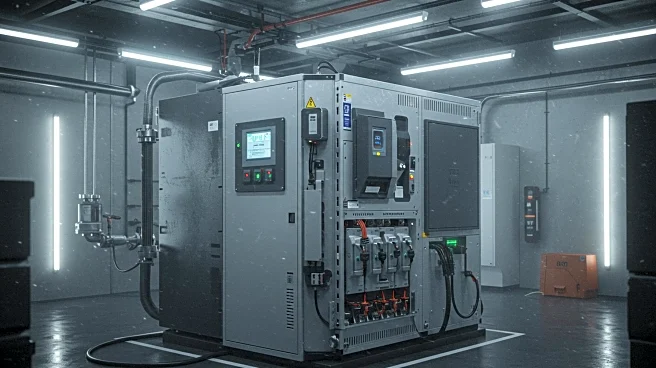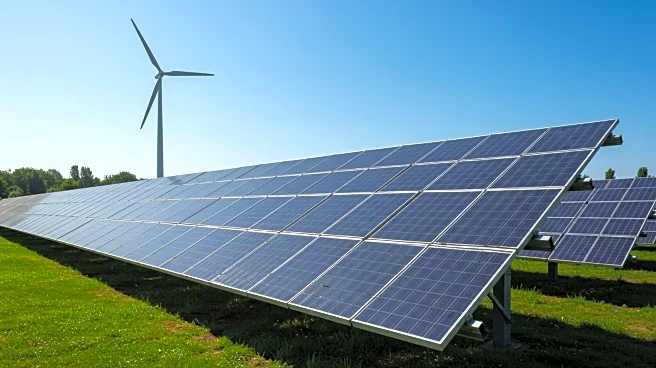What is the story about?
What's Happening?
Researchers from the University of California, Berkeley have released a working paper indicating that the PJM Interconnection has surplus interconnection capacity capable of supporting approximately 153 GW of solar, wind, and storage. This capacity could be utilized to meet growing electric demand, primarily driven by data center development. However, the loss of Inflation Reduction Act clean energy tax credits reduces the economically viable renewable energy and storage potential to about 106 GW. PJM's peak load reached around 160 GW during a recent heat wave, highlighting the need for additional power supplies. The study suggests that leveraging existing interconnection capacity could allow PJM to meet its near-term needs with solar and storage, which can be constructed more quickly than traditional gas-fired power plants.
Why It's Important?
The findings underscore the potential for renewable energy to address increasing electricity demands in the PJM region, which spans several states in the U.S. The ability to utilize surplus interconnection capacity for renewable projects could significantly enhance energy security and sustainability. This development is crucial as PJM warns of insufficient power supplies due to rising demand from data centers. The integration of solar and storage solutions offers a faster and more environmentally friendly alternative to traditional power generation methods, potentially reducing reliance on fossil fuels and lowering emissions. Stakeholders in the energy sector, including policymakers and renewable energy companies, stand to benefit from these insights as they navigate the transition to cleaner energy sources.
What's Next?
The reformed Surplus Interconnection Service (SIS) process by PJM, approved by the Federal Energy Regulatory Commission, is expected to facilitate the expedited review of projects utilizing surplus capacity. EDP Renewables North America has begun filing SIS requests, indicating that significant new capacity, particularly storage, may come online in the coming years. The development of this market will depend on further alignment of PJM's rules for capacity injection rights. Additionally, EDP is considering repowering aging wind farms with solar and storage, which could provide a load-following product for customers. Continued collaboration and regulatory adjustments will be necessary to maximize the use of surplus interconnection capacity.
Beyond the Headlines
The study highlights the importance of strategic planning and regulatory support in optimizing renewable energy integration. The potential to repower existing wind farms with solar and storage presents an opportunity to extend the life of renewable assets and enhance their efficiency. This approach aligns with broader efforts to transition to sustainable energy systems and reduce carbon footprints. The successful implementation of these strategies could serve as a model for other regions facing similar challenges in balancing energy demand and supply.
AI Generated Content
Do you find this article useful?











